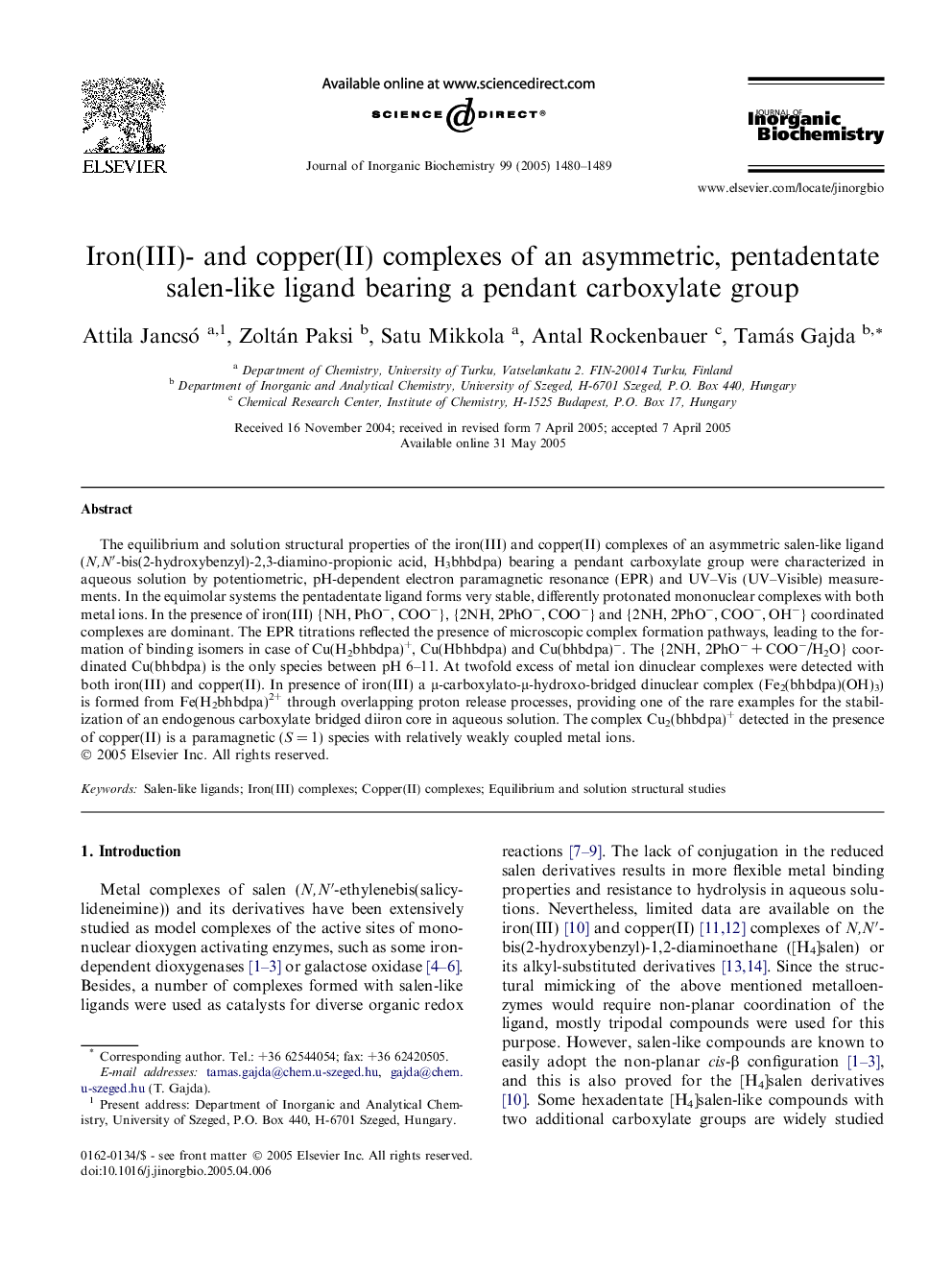| Article ID | Journal | Published Year | Pages | File Type |
|---|---|---|---|---|
| 10574056 | Journal of Inorganic Biochemistry | 2005 | 10 Pages |
Abstract
The equilibrium and solution structural properties of the iron(III) and copper(II) complexes of an asymmetric salen-like ligand (N,Nâ²-bis(2-hydroxybenzyl)-2,3-diamino-propionic acid, H3bhbdpa) bearing a pendant carboxylate group were characterized in aqueous solution by potentiometric, pH-dependent electron paramagnetic resonance (EPR) and UV-Vis (UV-Visible) measurements. In the equimolar systems the pentadentate ligand forms very stable, differently protonated mononuclear complexes with both metal ions. In the presence of iron(III) {NH, PhOâ, COOâ}, {2NH, 2PhOâ, COOâ} and {2NH, 2PhOâ, COOâ, OHâ} coordinated complexes are dominant. The EPR titrations reflected the presence of microscopic complex formation pathways, leading to the formation of binding isomers in case of Cu(H2bhbdpa)+, Cu(Hbhbdpa) and Cu(bhbdpa)â. The {2NH, 2PhOâ + COOâ/H2O} coordinated Cu(bhbdpa) is the only species between pH 6-11. At twofold excess of metal ion dinuclear complexes were detected with both iron(III) and copper(II). In presence of iron(III) a μ-carboxylato-μ-hydroxo-bridged dinuclear complex (Fe2(bhbdpa)(OH)3) is formed from Fe(H2bhbdpa)2+ through overlapping proton release processes, providing one of the rare examples for the stabilization of an endogenous carboxylate bridged diiron core in aqueous solution. The complex Cu2(bhbdpa)+ detected in the presence of copper(II) is a paramagnetic (S = 1) species with relatively weakly coupled metal ions.
Related Topics
Physical Sciences and Engineering
Chemistry
Inorganic Chemistry
Authors
Attila Jancsó, Zoltán Paksi, Satu Mikkola, Antal Rockenbauer, Tamás Gajda,
